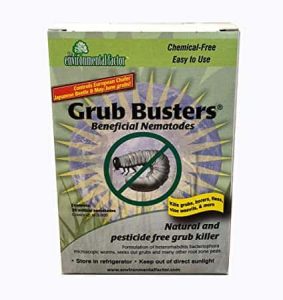[vc_row type=”in_container” full_screen_row_position=”middle” scene_position=”center” text_color=”dark” text_align=”left” overlay_strength=”0.3″ shape_divider_position=”bottom”][vc_column column_padding=”no-extra-padding” column_padding_position=”all” background_color_opacity=”1″ background_hover_color_opacity=”1″ column_shadow=”none” column_border_radius=”none” width=”1/1″ tablet_text_alignment=”default” phone_text_alignment=”default” column_border_width=”none” column_border_style=”solid”][vc_column_text]One of the biggest complaints from vegetable growers this year is the presence of cutworms in the soil. As newly planted seeds sprout and the first leaves emerge, the cutworm wraps its body around the stem, drinks the plant’s sap and cuts the stem completely off at ground level.
Major damage can occur overnight.
Cutworms are the larval stage of various moths. The moths lay eggs that overwinter and hatch early in the spring and the larva immediately begin to forage for tender young shoots. They wrap their bodies around just emerged stems in a quest for sap and in doing so they shear the plants off at ground level.
Eventually the cutworm will pupate for a week and emerge again as a moth. A single summer can have as many as seven complete generations of cutworms.
One of the best controls for cutworm are nematodes. Nematodes are microscopic worms that burrow into the grub and feed on them from the inside out. The nematodes will live in the soil for an entire season, offering control by decreasing the overall number of moths in the landscape.
Application of nematodes is quite easy. Using a hose end attachment, the nematodes are sprayed onto the garden soil. This should be done around sunset as nematodes can be killed off by the UV rays of the sun. Another helpful tip is to spray before a period of rain. This will help the nematodes move deeper into the soil and assist in giving better overall coverage. Once they locate a grub it will take two days for the nematode to complete its work. As an added benefit, the nematodes will also help control white and Japanese grubs in the same location.
Nematodes do have a shelf life and should be used within two weeks of purchase and should be stored in the refrigerator, not the freezer.
Garth Davey, 2021
Questions or comments? Please email Garth: Questions@kbfarms.ca


